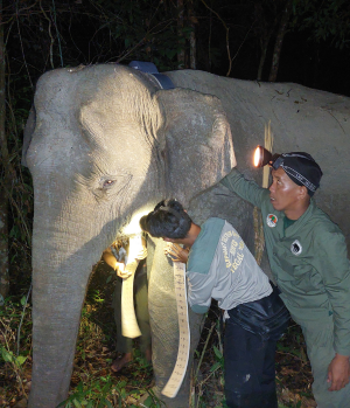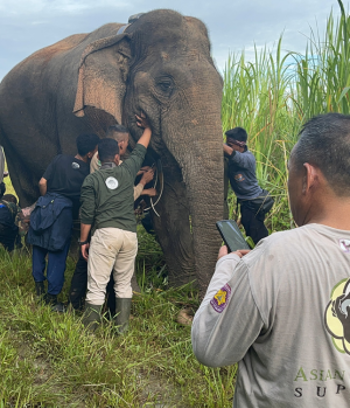
International partnerships
Meet our partners fighting for wildlife on the frontline overseas.
We are global citizens, and Zoos Victoria recognises our responsibility to extend our conservation efforts and help build capacity and capability beyond Australia’s borders.
As such, we have supported holistic wildlife conservation in other countries since 1992. Over the subsequent years, our conservation efforts abroad have expanded and our strategy has evolved. Zoos Victoria believes that people are critical in the fight to recover species at risk of extinction. Programs supported by Zoos Victoria must have meaningful engagement with people who share the forests and rivers with the wildlife that we care so deeply about.
Together we can change the future for endangered wildlife all over the world.
Mabuwaya Foundation, Philippines
Working together to protect the world's most endangered crocodile.
Zoos Victoria has partnered with the Mabuwaya Foundation (meaning “long live the crocodile” in Tagalog) since 2000 to protect the Philippine Crocodile. With a wild population of 110-130 individuals, the Philippine Crocodile is the most endangered species of crocodile in the world.
We provide funding for the Foundation’s fieldwork, which includes habitat protection and wild crocodile population surveys. Our support also benefits the community program that is critical for empowering villagers and farmers to protect their biodiversity, and through that their livelihoods. We also work strategically to facilitate partnerships with the Philippines Government and international zoos to support in situ conservation of this species.
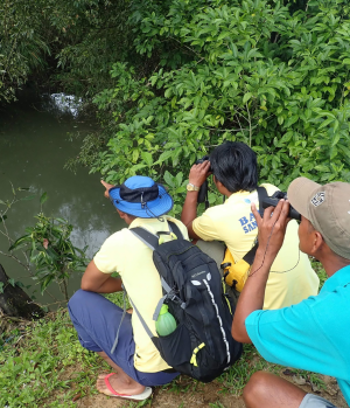
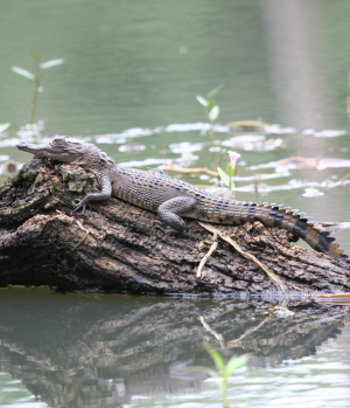
Fauna & Flora, Vietnam
Protecting Vietnam's remaining Asian Elephants.
Vietnam’s populations of Northern White-cheeked Gibbons and Asian Elephants are critical. In the early years of our partnership with Fauna & Flora we supported surveys that confirmed Pu Mat National Park as the global stronghold for the Northern White-cheeked gibbon, with an estimated population of about 1,500 individuals.
Our primary focus now is Asian elephants as Vietnam is the country with the smallest number of elephants across the range of this species, with Government estimates of perhaps 100. Pu Mat National Park and surrounding Nghe An Province is a priority region for elephants in Vietnam. Zoos Victoria supports the work of the National Park and Fauna & Flora in protecting the elephants and implementing measures to prevent and address human-elephant conflict, which is the most serious threat to Asian elephants across their range.
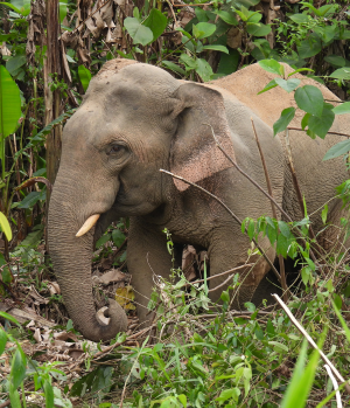
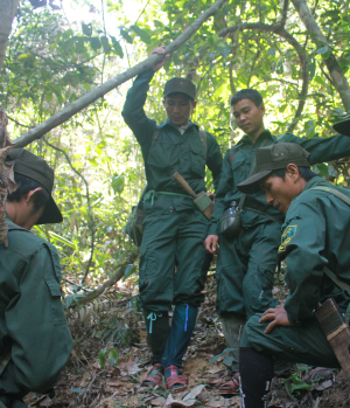
Société d'Ornithologie de Polynésie, French Polynesia
Conservation on the frontline in some of the most remote islands in the world.
Lying more than 1,400km north-west of Tahiti, the 12 islands of the Marquesas Archipelago are mostly of volcanic origin. Like many islands across the Pacific, their wildlife has been decimated by predation from introduced species such as cats and rats.
Zoos Victoria is supporting Société d’Ornithologie de Polynesie-Manu (“manu” is Tahitian for “bird”) projects to reverse extinction trends of the most endangered birds, many of whom only occur on single islands.
The highest priority is the Fatu Hiva monarch, a flycatcher that now only occupies about 29ha in a single valley on Fatu Hiva Island. Once common on the island, predation by cats and rats, and more recently avian malaria, has driven the population down to just 18 adults, making this the most endangered species of bird in the world. Zoos Victoria is providing funds, equipment and staff expertise for a captive project that is aimed at recovering this little bird.

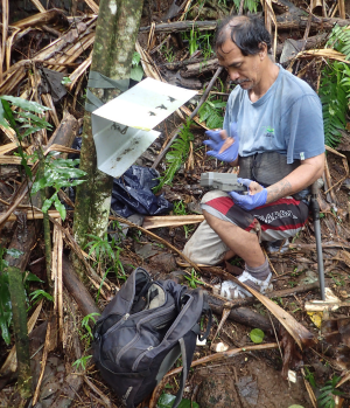
A conversation with Dr Caroline Blanvillain, Société d'Ornithologie de Polynésie. The bird in the film is the Fatu Hiva Monarch, closely related to the Tahiti Monarch and the most endangered bird in the world.
Dian Fossey Gorilla Fund International, Rwanda
Providing sustainable alternatives to activities that threaten gorillas and their forests.
Humans and gorillas share 98% of the same DNA. But sadly, it is mainly human-created threats that are driving this great African ape towards extinction. Gorillas are hunted by poachers, fall victim to snares set to catch other wildlife, are collateral damage in civil conflict and can suffer from diseases carried by people when they enter gorilla habitats.
The Mountain gorilla is the only species of great ape whose numbers are increasing in the wild, due in no small part to the commitment of the Dian Fossey Gorilla Fund International to address these threats. Zoos Victoria supports the Fund’s community projects adjacent to the Volcanoes National Park in north-west Rwanda. These are aimed at reducing people’s unregulated entry to the National Park by providing sustainable alternatives to hunting wildlife by growing Oyster mushrooms and extracting water by installing rainwater tanks.
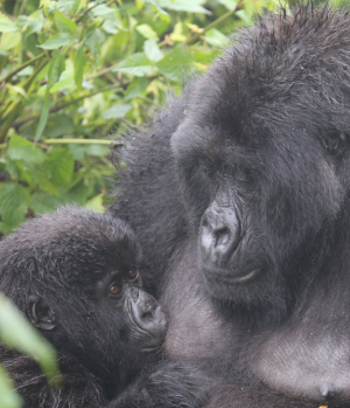
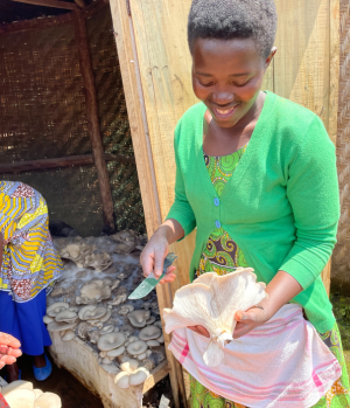
Tree Kangaroo Conservation Program, Papua New Guinea
Protecting wildlife and supporting people in Papua New Guinea's mountain forests
Papua New Guinea's wildlife and its people face growing threats from unregulated development, particularly logging and mining; high levels of poverty; limited access to health and education; and the absence of sustainable alternative incomes. The Matschie’s Tree-kangaroo is among the species that have suffered from hunting and habitat loss, although the population is now considered stable. It is the species that led to the creation of the Tree Kangaroo Conservation Program.
Zoos Victoria is proud to partner with the Program to support the YUS Conservation Coffee, a product that generates measurable benefits for both wildlife and people. Upon joining the Coffee Program, villagers pledge land to the YUS Conservation Area, increasing wildlife and habitat protection. In turn, local people gain increased access to healthcare and education. The YUS coffee is now an integral feature of Zoos Victoria’s Coffee for Wildlife campaign, which engages Victorians in conservation of wildlife and wild places through coffee.
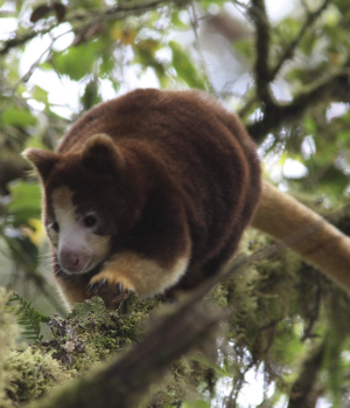
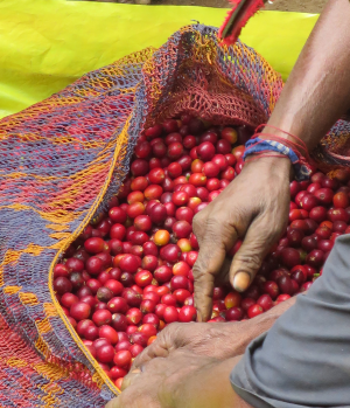
International Elephant Project, Sumatra
Supporting welfare and conservation of Asian Elephants in Sumatra.
Asian Elephant numbers have dramatically declined over the last century, and current estimates suggest between 48,000 and 51,000 animals remaining in the wild. Three subspecies are recognised, with the Sumatran Asian Elephant at greatest risk and listed as Critically Endangered.
The International Elephant Project supports and manages a suite of elephant welfare and conservation projects across Sumatra. Zoos Victoria is supporting elephant welfare through the wildlife ambulance and veterinary training project based at Syiah Kuala University, providing direct care for elephants across Sumatra. Our funds are also helping elephant conservation through GPS collar replacement in Way kambas National Park in southern Sumatra and reducing human-elephant conflict in the buffer zone of Gunung Leseur National Park on the edge of the globally significant Leseur Ecosystem.
